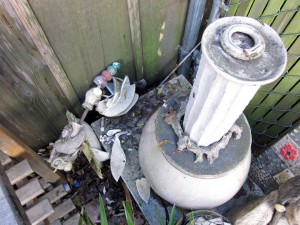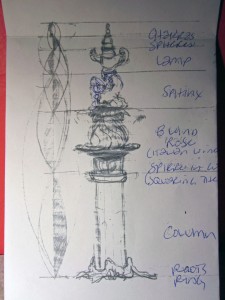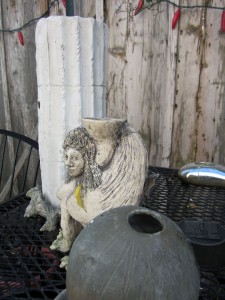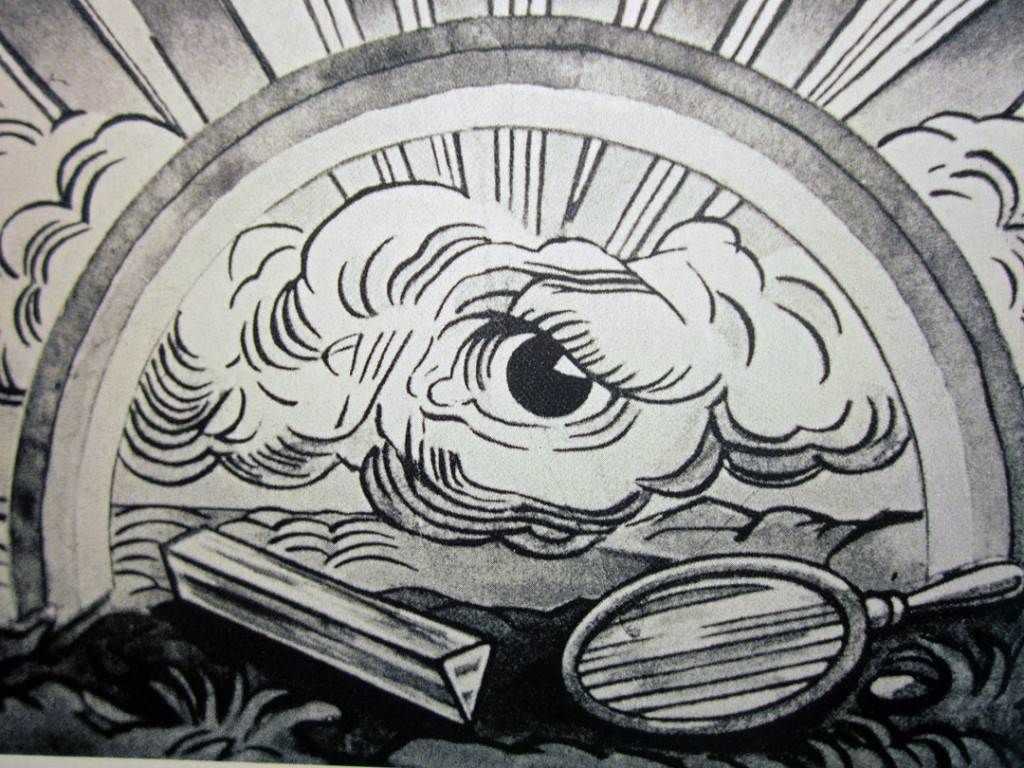
Some of you might not want to parse out what makes one thing more beautiful than another. I completely understand. Keats complained that Newton had “destroyed the poetry of the rainbow by reducing it to a prism.”
I’m here to meld that duality and I contend further that prism and poetry can co-exist fruitfully. In fact, in order to make my best art, I require that generation of The Third which emerges from Opposites.
I’ve tried the romance of just messing around with the crayons, the keyboard, and the clay, rather juvenilely hoping that the lightening bolt of genius will make a lucky strike. (Even sometimes thinking it actually did, for me.) Ultimately, though, it’s like playing Blackjack: while the odds are better than most games of chance, they still are in the House’s favor, not mine.
Goal-less and right-brained fooling around is creatively essential, but it is a warm-up: the beginning doodle, the free-write, the initial pinching, coiling and rolling. It so rarely makes it to that zen place of offhanded perfection, as much as we might be glancing over our shoulders to see if it did.
To take my craft into beauty and excellence –leaving the lightening bolts to shock themselves –I explored the nature of the creative process, studied Color Theories and The Principles and Elements of Art until I felt conversant and sometimes even fluent.
In other words, I got scientific and it helped. Now I could not only wonder at the rainbow’s glories, I could unweave it and put it back together in my own poetic way.
When I changed my art-making from 2D mixed media to 3D ceramics, a whole new set of loveliness standards came into play. What about Line and Form in Space? What about that Viewer in motion around the piece – or actually using it? What about Front, Side and Back? Top and Bottom?
So…. besides sticking to the work in my studio evolving my efforts, besides near constant conversations with mentors, colleagues, fellow enthusiasts and supporters, besides Art History courses and museum gallery visits, and besides deep thought on what motivates and thrills me, I read books.
And here are those that I deliciously don’t quite understand, but every time I delve through them, a little more is revealed:
The Nature and Art of Workmanship and The Nature and Aesthetics of Design, both by woodworker David Pye. If you click on the links, you will get descriptions and reviews. (Don’t miss the one for the Design book by wiredweird! I can’t describe the power of this book any better.)
Li: Dynamic Form in Nature by David Wade
And two exploring the realms of Sacred Geometry, whose philosophies lie at the heart of my seeking the Music of the Spheres in all I do.
Sacred Geometry by Miranda Lundy
The Power of Limits: Proportional Harmonies in Nature, Art and Architecture by Gyorgy Doczi. The cover of my edition gives a hint of how the author connects the Golden Mean and the Fibonacci sequence to both the natural and visual world: with the language of mathematics.
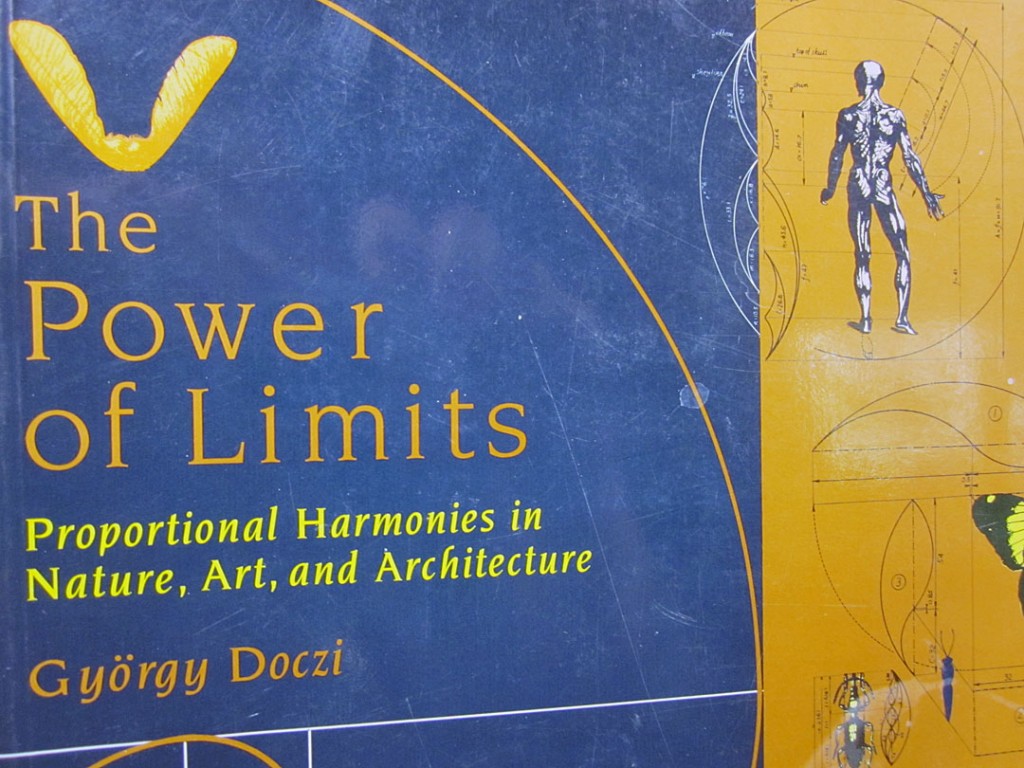
Herein lie richly illustrated pages with examples from plants, crafts, animals, Art: both ancient and modern, writing, the human body, music and more, all pointed toward a revelation of cosmic order so universal the author coined a new word for it Dinergy. “…Made up of two Greek words: dia — ‘across, through, opposite;’ and ‘energy.'”
A sample page.
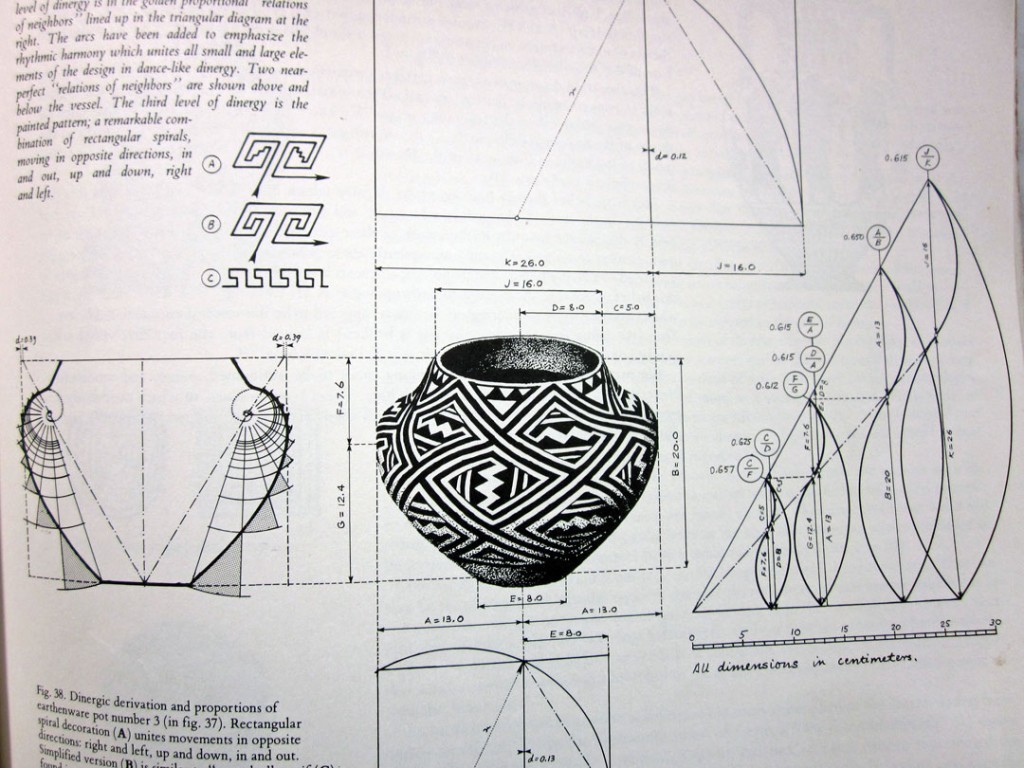
So what makes something beautiful? It’s surely not book learning and the methods of parsing, unweaving, reducing and dissecting! I don’t play around with numbers at all, I make art.
Rather, it’s about understanding that essential beauty’s out there, we’re all capable of perceiving it and here’s a Tiny Bit o’ Why. We may wildly disagree on specifics because there are many ways these patterns manifest.
Time, place, culture, narrative and materials don’t matter, yet there it is: A certainty of visual knowing instinctive and true.
I swear this knowing is how I sense when a work is done. There’s an out-breath, a hand relaxation, a satisfaction, all related to the cessation of seeking more for that piece. The rainbow is rewoven for now and I don’t need to measure it to make sure.
